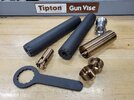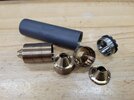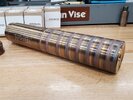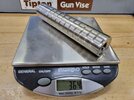After getting my supressor from Silencer Central. My review on the experience…
* * * Supressors should not cost $950 + $100 in adaptors ****
Only our largest titanium rifle cans are that high. The rest are in the $330-$680 range.
Manufacturing in general is a very expensive type of business to run, and there are a number of other factors driving the cost of suppressors in the USA. Many have already been touched on.
Materials are a small part of the cost, usually not more than about 10%.
Of course R&D has to be amortized over units sold, and this industry just doesn't have the economy of scale like AR15s. Lots of R&D involves buying host weapons and other manufacturer's products. We have tons of firearms, cans, adapters, muzzle devices, etc. that we didn't want personally. I don't like Glocks or AKs, but we have them for testing & demonstrating. I don't use any other manufacturer's muzzle devices, but we own a pile of them for developing adapters and checking fitment.
As a very small manufacturer, we have well over a half million in equipment that we bought used with cash. You could quadruple that if we'd bought new on credit.
Consumables like carbide inserts, blades, twist drills, taps, chemicals, coolants, etc. are over $100k/yr.
Licensure, DDTC registration, SOT, insurance are about $18k annually for us.
Website and advertising costs are not insignificant.
The list goes on.....
I probably pay myself less annually than most of you here make, and I average 62 hour work weeks. I live in a modest house and my daily driver is a 2000 Dodge Durango with a quarter million miles. I don't want sympathy, I love what I do, and would make a change if I needed more revenue. And there are perks aside from having as many cans as I want for cost of materials and my time. Just pointing out that most of us are not getting wealthy manufacturing suppressors, despite the relatively high cost of the products.






